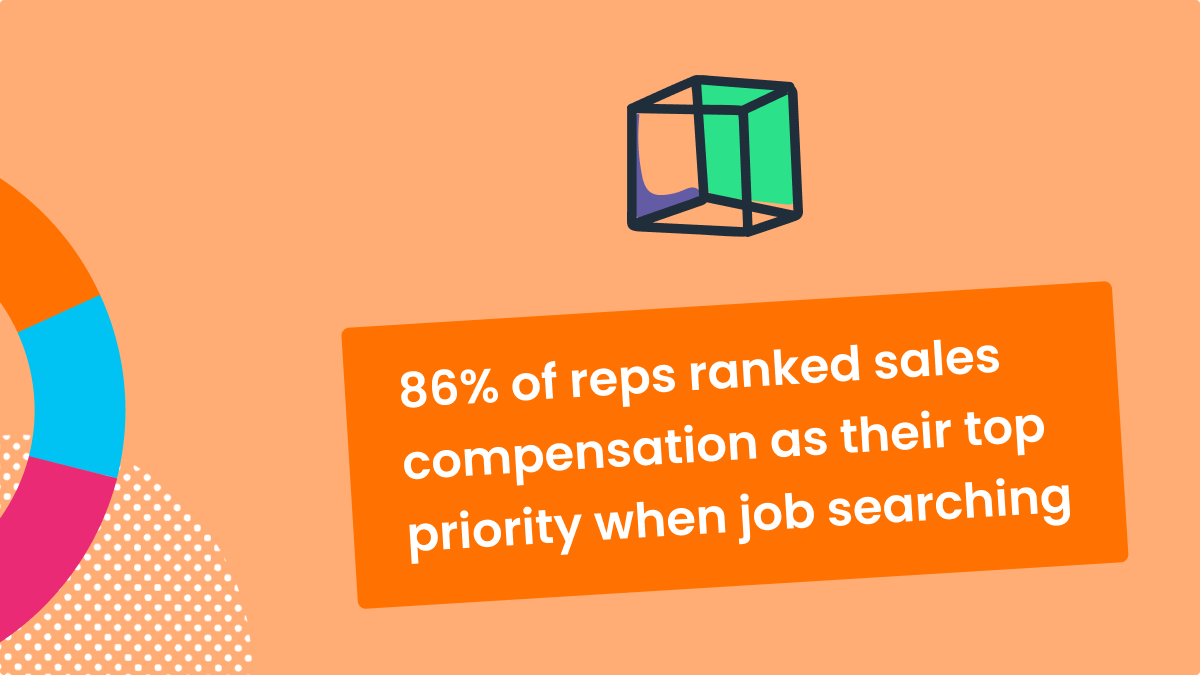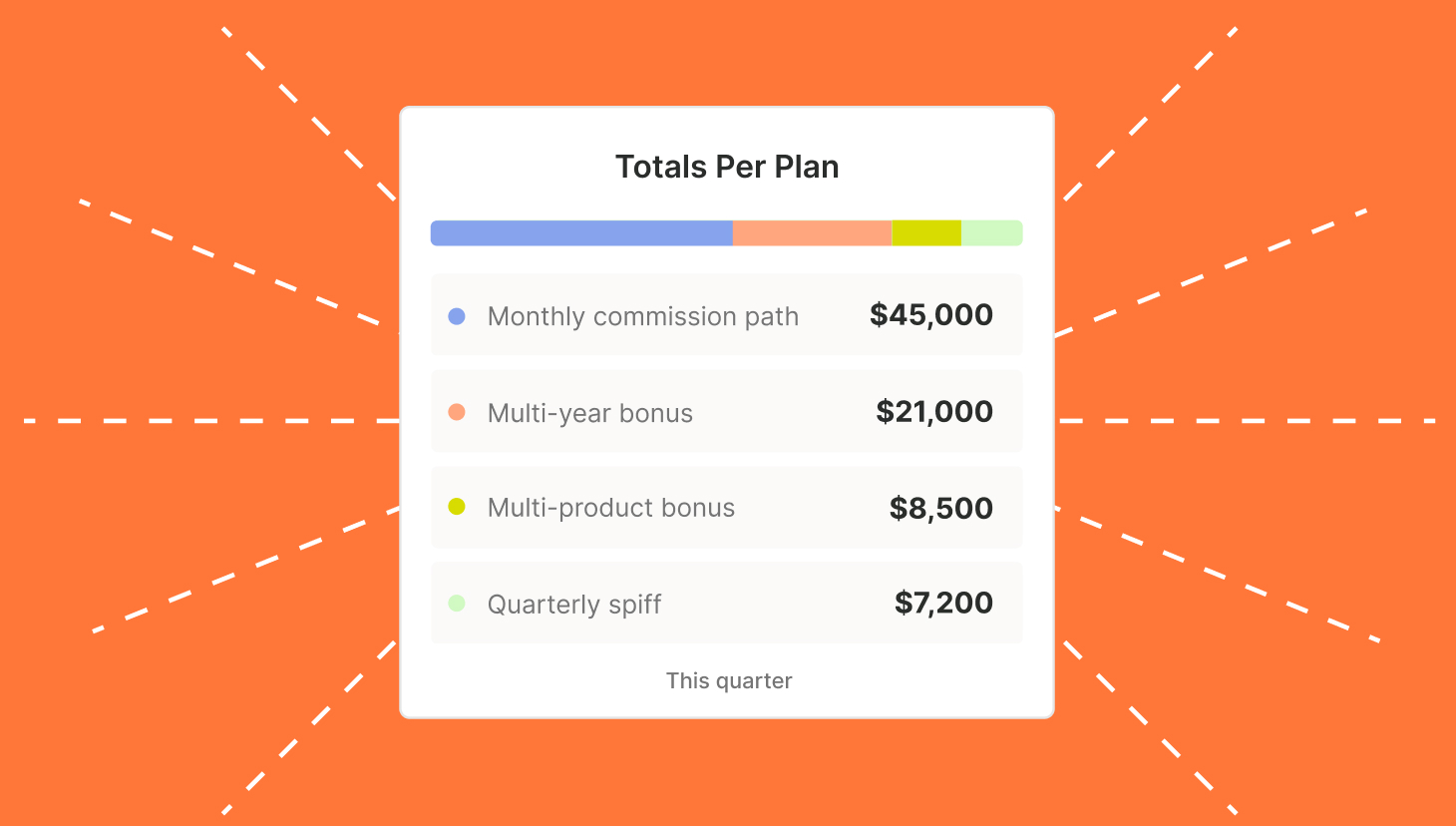The sales rep hiring process has changed dramatically over the past few years.
SaaS recruiters conduct interviews almost exclusively over video now. Remote sales jobs have exploded in popularity, which has unlocked flexibility around work environments and salary accommodations for the sales representative role.
Even the power dynamic between the interviewer and the interviewee has shifted. Reps must be sold on the opportunity, not the other way around.
That’s especially true for top performers who can quickly hop between roles in search of the most lucrative one.
Did you know that 86% of reps ranked sales compensation as their top priority when it comes to job searching? That’s according to a survey we ran over the summer with more than 300 leaders and reps across the SaaS industry.
So, how can recruiters and hiring managers re-think sale rep hiring processes in today’s market?
There are a number of ways to go about this, but we want to focus on sales comp transparency throughout recruiting.
In doing so, you’re saving both your and the job seeker’s time in the case of the OTE not coming close to expectations. But even more, you’re establishing standardization across positions with the same title and making it more equitable.
“By leading with transparent OTE information, we can remove biases that can influence salary negotiations and instead ensure equal pay for equal qualifications,” said QuotaPath VP of Sales and Customer Success Caroline Tarpey.
If that hasn’t convinced you, just remember that an increasing number of states actually require companies by law to disclose salary info in job postings.
Simplifying sales compensation plans
In addition to including standardized salary and OTEs in job descriptions, you should also simplify your comp plans to add transparency to your sales rep hiring process.
This is a subject we talk about at length with RevOps, Finance, and Sales leaders and reps. But one department that benefits from a simplified commission plan that often gets overlooked is recruiting.
The more complexities and commission structures you add to your compensation strategy, the harder it is for your reps to understand it, your leaders to explain it, and your recruiters to sell it to top talent.
“I remember at a previous role, our sales development reps had three different components,” Angie said. “One plan included 20% variable pay tied to activity, 40% from sales accepted opportunities, and the remaining 40% was based on annual recurring revenue if that sales accepted opportunity closed.”
Now imagine explaining that to an entry-level SDR candidate.
“If you explain that to someone who has no sales background prior, you’re going to confuse your candidates,” Angie said. “If they don’t understand their comp plans, it’s harder for candidates to see a path to success in their new role.”
Pro-tip — If your team uses QuotaPath, use our technology as a recruiting tool. Reps reported that they have more trust that they’re being paid accurately when an incentive compensation management software runs commissions.
This can come at the end of your hiring manager’s initial conversation.
“When you move to the compensation discussion at the end, be sure to not only affirm the OTE but also the benefits the role provides (such as an attainable variable based on team trends, equity, health care),” Caroline said.
Then, allow candidates time to ask questions.
“This is also a wonderful time to communicate why your organization’s philosophy of standard OTEs at each level is such a benefit to them, and how they can expect to earn promotions to higher levels,” added Caroline.
Pro tip — use our Compensation Hub Earnings Curve as a visual to show earnings potential at various attainment levels.

Final thoughts on the sales rep hiring process
To ensure compensation transparency makes it into your recruiting process, add your details to your job descriptions.
Then, build a standard agenda for the recruiting screen and the hiring managers’ conversations to follow. This should include instructions to tell the candidate upfront that you’ll save time at the end of the meeting to discuss sales compensation plan examples.
“This assures them that they will not leave without covering that important piece and allows them to focus on the rest of the conversation first,” said Caroline.
About QuotaPath
QuotaPath’s commission tracking and earnings forecasting software bring clarity, alignment, and automation to every party tied to sales compensation.
For compensation plan design, visit Compensation Hub, our new free resource to help teams discover and explore compensation plans. And, to learn how we integrate with your sales tech stack and automate sales commission payments, book a time with our team to chat more.




